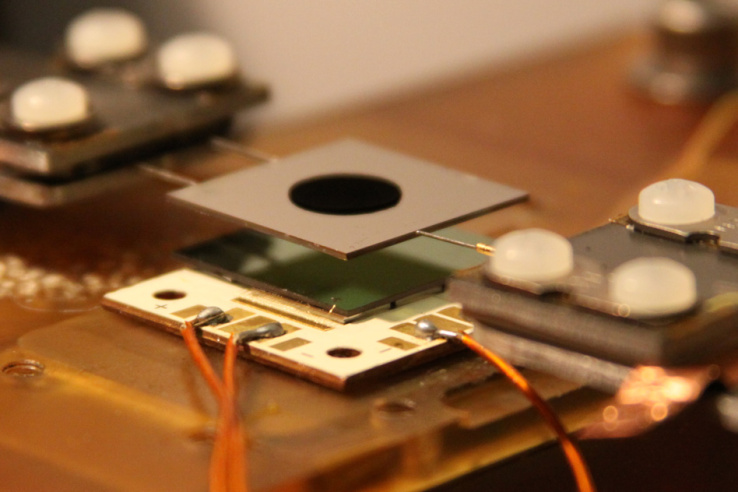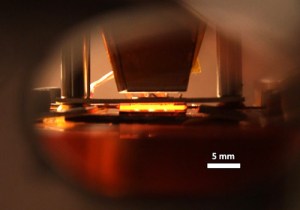

An experimental solar cell created by MIT researchers could massively increase the amount of power generated by a given area of panels, while simultaneously reducing the amount of waste heat. Even better, it sounds super cool when scientists talk about it: “with our own unoptimized geometry, we in fact could break the Shockley-Queisser limit.”
The Shockley-Queisser limit, which is definitely not made up, is the theoretical maximum efficiency of a solar cell, and it’s somewhere around 32 percent for the most common silicon-based ones.
You can get around this by various tricks like stacking cells, but the better option, according to David Bierman, a doctoral student on the team (and who is quoted above), will be thermophotovoltaics — whereby sunlight is turned into heat and then re-emitted as light better suited for the cell to absorb.
Sound weird? Here’s the thing. Solar cells work best with a certain wavelength of light — perhaps ultraviolet is too short, while infrared is too long, but let’s say 600nm (orange visible light) is perfect. Only some of the broad-spectrum radiation emitted by the sun is at or around 600nm, which limits the amount of energy the cell can pull out of that radiation — that’s one of the components of the Shockley-Queisser limit.
What Bierman and the others on his team did was to add a step between the sun and the cell: a carefully engineered structure of carbon nanotubes. “The carbon nanotubes are virtually a perfect absorber over the entire color spectrum,” said Bierman in the MIT news release. “All of the energy of the photons gets converted to heat.”

The team’s thermophotovoltaic cell in action.
Normally heat is undesirable in a solar cell, as it’s just waste energy that can interfere with normal operation. But in this case, the heat is not allowed to dissipate; instead, the carbon nanostructure converts the heat back into light — at the exact optimum wavelength of the photovoltaic cell.
The result is a huge increase in efficiency, and that’s not the only benefit. Heat, unlike light, is easy to store and move. If the day’s sunlight was entirely converted to heat and stored away, it could be converted to light on demand — like, say, at night. In other words, this technique essentially allows sunlight to be saved for later.
Experimental results bore out the theory, and a prototype TPV cell performed as expected. But the tech still needs to make it out of the lab, and manufacturing the complex carbon nanomaterials in bulk is no simple task. So you won’t be using thermophotovoltaics next year or the year after — but the technique is a tremendously promising one and unlikely to be left on the shelf.
The team’s research was published in the journal Nature Energy.

